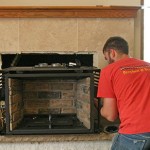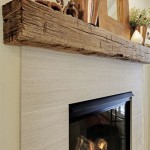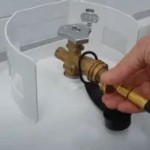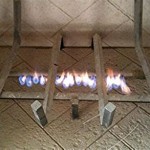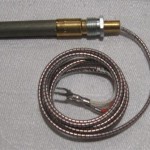Make Your Own Fireplace Hearth: A Comprehensive Guide
The fireplace hearth serves as a critical component of a traditional or modern fireplace setup. It provides a non-combustible barrier between the firebox and the surrounding floor, preventing the spread of embers and heat. In addition to its functional role, the hearth also contributes significantly to the aesthetic appeal of the fireplace and the room as a whole. Constructing a custom fireplace hearth offers an opportunity to personalize the space, ensuring it complements the existing décor and meets specific design requirements. This article provides a detailed guide to creating a custom fireplace hearth, outlining the essential steps, materials, and considerations involved in the process.
Before commencing any construction project, thorough planning is paramount. Designing a fireplace hearth requires careful consideration of several factors, including the size and style of the fireplace, the available space, and the desired aesthetic. It is imperative to adhere to local building codes and safety regulations, which often dictate minimum hearth dimensions and material requirements. Researching and understanding these regulations is crucial for ensuring the hearth meets safety standards and avoids potential code violations.
The planning phase also involves selecting the appropriate materials. Common materials for fireplace hearths include brick, stone, tile, concrete, and various manufactured stone products. Each material offers distinct advantages and disadvantages in terms of cost, durability, aesthetics, and ease of installation. The choice of material should align with the overall design concept and the structural requirements of the hearth.
Understanding Hearth Requirements and Building Codes
Fireplace hearths are subject to specific building codes designed to prevent fires and ensure occupant safety. These codes typically address the size and construction of the hearth extension, the distance from the firebox opening, and the non-combustible nature of the materials used. The hearth extension is the area of non-combustible material that extends outward from the firebox opening and to the sides. Its purpose is to protect the floor and surrounding materials from sparks and embers that may escape the firebox.
The specific dimensions of the hearth extension are typically determined by the size of the fireplace opening. Generally, larger openings require larger hearth extensions. Building codes provide precise guidelines for these dimensions, specifying the minimum depth of the hearth extension in front of the firebox and the minimum width extending to each side. It is crucial to consult local building codes or a qualified building inspector to determine the exact requirements for the specific location and type of fireplace.
Furthermore, building codes mandate that the hearth be constructed of non-combustible materials. This requirement ensures that the hearth will not ignite or contribute to the spread of fire. Acceptable materials include brick, stone, concrete, tile, and approved manufactured stone products. It is essential to select materials that are specifically rated for fireplace use and meet the applicable fire-resistance standards. Using combustible materials, such as wood or carpet, is strictly prohibited within the hearth extension.
Obtaining the necessary permits is also a crucial step in the process. Many jurisdictions require building permits for fireplace installations or modifications, including hearth construction. Failing to obtain the required permits can result in fines, delays, and potential safety hazards. Contacting the local building department early in the planning process is recommended to determine the permit requirements and ensure compliance with all applicable regulations.
Selecting Materials and Tools
The selection of materials significantly impacts the aesthetics, durability, and overall cost of the fireplace hearth. Brick is a classic choice, offering a traditional and rustic appearance. It is durable, fire-resistant, and relatively easy to work with. Stone provides a more natural and rugged look, offering a wide range of colors, textures, and sizes. Tile offers versatility in design, allowing for intricate patterns and a variety of finishes. Concrete is a versatile option for creating a modern and minimalist look. Manufactured stone products offer the aesthetic appeal of natural stone at a lower cost and are often easier to install.
In addition to the primary hearth material, other essential materials include mortar, grout, backer board, and waterproofing membrane. Mortar is used to bind the bricks or stones together, creating a solid and durable surface. Grout is used to fill the spaces between tiles, providing a watertight seal. Backer board is a cement-based board used as a substrate for tile installations, providing a stable and moisture-resistant surface. Waterproofing membrane is applied to the subfloor to prevent moisture from penetrating the hearth structure.
The tools required for hearth construction will vary depending on the chosen materials and construction methods. However, some essential tools include a trowel, mortar mixing tub, brick hammer, chisel, level, measuring tape, safety glasses, gloves, and a wet saw (for cutting brick, stone, or tile). A power mixer can be helpful for mixing large batches of mortar. Proper safety equipment, including safety glasses and gloves, is crucial for protecting against dust, debris, and potential injuries.
When selecting mortar, it is crucial to use a type that is specifically designed for fireplace applications. These mortars are formulated to withstand high temperatures and resist cracking. Similarly, the grout used for tile installations should be heat-resistant and non-shrinking. Consulting with a building materials supplier is recommended to ensure that the selected materials are suitable for fireplace hearth construction and meet the required safety standards.
Step-by-Step Construction Process
The construction process for a fireplace hearth involves several key steps, including preparing the subfloor, laying the foundation, installing the hearth materials, and finishing the surface. Proper preparation is essential for ensuring a durable and long-lasting hearth.
The first step is to prepare the subfloor. This involves ensuring that the subfloor is level, clean, and structurally sound. Any existing flooring or debris should be removed. If the subfloor is uneven, it may be necessary to apply a leveling compound to create a smooth and even surface. A layer of backer board should be installed over the subfloor to provide a stable and moisture-resistant substrate for the hearth materials. The backer board should be secured to the subfloor with screws or nails.
Next, lay the foundation for the hearth. The foundation typically consists of a layer of concrete or mortar, providing a solid base for the hearth materials. The foundation should be level and uniform in thickness. If using concrete, it should be allowed to cure completely before proceeding to the next step. For mortar foundations, ensure the mix is stiff enough to hold its shape and provide adequate support.
The third step is to install the hearth materials, such as brick, stone, or tile. Begin by laying out the first course of materials, ensuring that they are properly aligned and spaced. Use mortar to secure the materials to the foundation. Apply the mortar evenly and consistently, creating strong and watertight joints. Use spacers to maintain uniform spacing between the materials. As each course is laid, check for level and alignment to ensure a straight and even surface.
For tile installations, apply a thin layer of mortar to the backer board using a notched trowel. Press the tiles firmly into the mortar, ensuring that they are properly aligned and spaced. Use tile spacers to maintain uniform spacing. After the mortar has cured, apply grout to fill the spaces between the tiles. Wipe away any excess grout with a damp sponge.
The final step is to finish the surface of the hearth. This may involve applying a sealant to protect the materials from moisture and stains. For brick or stone hearths, a clear sealant can enhance the natural colors and textures of the materials. For tile hearths, a grout sealer can help to prevent stains and discoloration. The hearth should be cleaned regularly to maintain its appearance and prevent the buildup of soot and debris.
Throughout the construction process, it is essential to consult with a qualified professional if needed. A building contractor or fireplace installer can provide valuable guidance and expertise, ensuring that the hearth is constructed safely and in accordance with all applicable codes and regulations.
By following these steps and exercising due diligence, homeowners can create a custom fireplace hearth that enhances the beauty and functionality of their living space while ensuring safety and compliance with building codes.

Is Your Fireplace Dated And In Need Of A Refresh Check Out This Makeover The Before Aft Diy Build Home

How To Build A Diy Built In Fireplace With An Electric Insert The Creative Mom

Diy Fireplace Mantel And Surround Jenna Kate At Home

How To Build A Diy Stone Fireplace Boxwood Design Co

Diy Fireplace Makeover At Home With The Barkers

Pin On Fireplace

Diy Fireplace Finished Addicted 2 Decorating

How To Build A Fireplace Red Cottage Chronicles

How To Make A Movable Faux Fireplace Part One Hearth Pneumatic Addict

Diy Fireplace Makeover At Home With The Barkers
Related Posts

